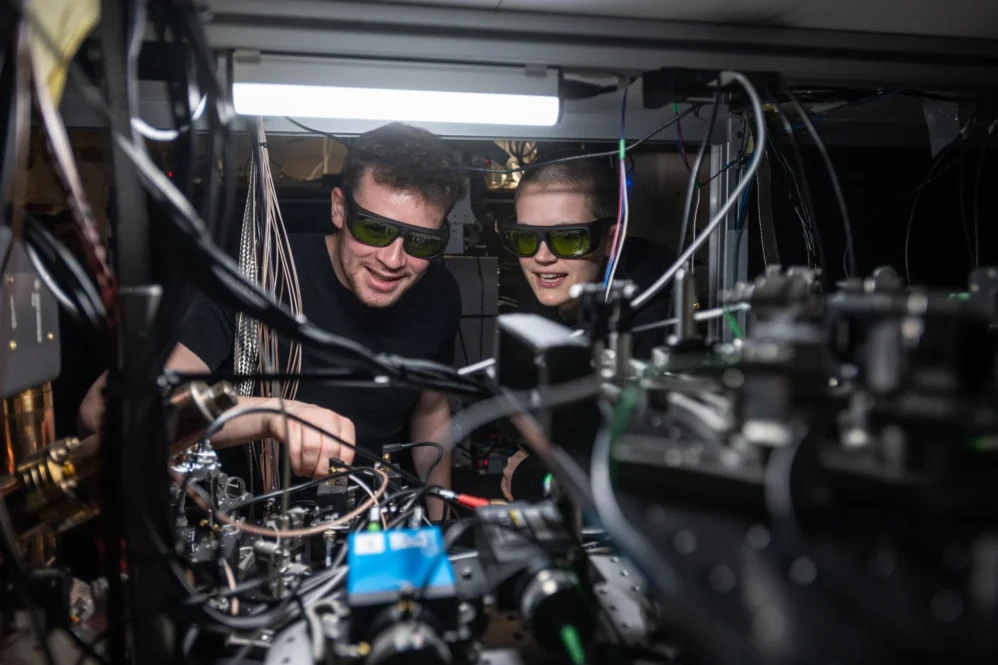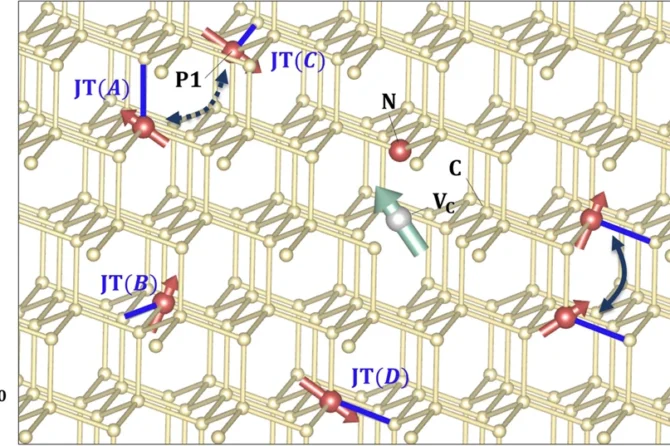Oxford University Physics researchers have achieved a significant milestone in quantum computing by successfully demonstrating the first distributed quantum computer system. Published in Nature, their breakthrough addresses one of quantum computing’s most persistent challenges: scalability.
The research team, led by Dougal Main and Professor David Lucas, developed a novel approach that connects separate quantum processors using photonic networks, effectively creating an integrated quantum computing system. Rather than attempting to fit millions of qubits into a single device, their method distributes the computational workload across networked modules, similar to how traditional supercomputers operate.
At the core of this innovation are modules containing trapped-ion qubits, which serve as atomic-scale quantum information carriers. These modules are interconnected via optical fibers, using photons instead of electrical signals for data transmission. The key achievement lies in their successful demonstration of quantum teleportation of logical gates across these network links – a crucial advancement over previous achievements that were limited to teleporting quantum states.
The system’s architecture offers remarkable flexibility and upgradeability. Individual modules can be modified or replaced without disrupting the entire system, providing a practical path toward scaling quantum computing capabilities. This distributed approach eliminates many engineering challenges associated with creating large single-unit quantum computers while maintaining the quantum properties essential for accurate computation.
To demonstrate the system’s effectiveness, the team successfully executed Grover’s search algorithm, a quantum method that can search unstructured datasets significantly faster than classical computers. This achievement validates the potential of distributed quantum computing to handle complex calculations that would take traditional supercomputers years to complete.
The implications of this breakthrough extend beyond computing power. The demonstrated ability to perform quantum teleportation of logical gates across network links lays the groundwork for a future “quantum internet.” Such a network could enable ultra-secure communication, distributed computation, and advanced sensing capabilities across physically separated quantum systems.
Dougal Main emphasized the significance of their achievement, noting that previous quantum teleportation demonstrations focused solely on transferring quantum states between separated systems. Their innovation lies in using quantum teleportation to create interactions between distant systems, enabling the execution of fundamental quantum computing operations across physically separated processors.
The scalability of this approach is particularly promising. In theory, there is no limit to the number of processors that can be connected, offering a practical solution to the quantum computing scale-up challenge. By distributing quantum processing across multiple smaller units, the system can potentially achieve the processing power of millions of qubits without requiring an impractically large single device.
Professor David Lucas acknowledged that while their experiment proves the feasibility of network-distributed quantum information processing with current technology, scaling up quantum computers remains a significant technical challenge. Future advancement will require both new physics insights and sustained engineering efforts.
This breakthrough represents a crucial step toward practical, large-scale quantum computing. By demonstrating that smaller quantum processors can work together effectively, the Oxford team has opened new possibilities for quantum computing applications across various fields, from cryptography to complex system simulation. Their distributed approach not only solves immediate scaling challenges but also provides a flexible framework for future quantum computing development.
Reference: “Distributed quantum computing across an optical network link” by D. Main, P. Drmota, D. P. Nadlinger, E. M. Ainley, A. Agrawal, B. C. Nichol, R. Srinivas, G. Araneda and D. M. Lucas, 5 February 2025, Nature. DOI: 10.1038/s41586-024-08404-x



